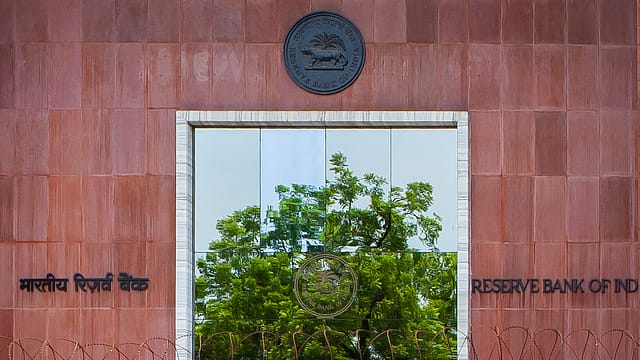RBI releases guidelines for banks to manage foreign currency exposure
ADVERTISEMENT

The Reserve Bank of India (RBI) on Tuesday issued guidelines for banks to manage their foreign currency exposure and avoid significant losses during the period of heightened volatility in foreign exchange rates.
The banking regulator has directed banks to assess the unhedged foreign currency exposures of all counterparties to whom they have an exposure in any currency. These new guidelines will come into force from January 1, 2023.
To address the risk on their books, banks were earlier advised to maintain incremental provisioning and capital requirements for their exposures to entities with unhedged foreign currency exposure. The term 'entities' was defined as those entities which have borrowed from banks including borrowing in INR and other currencies irrespective of the size of exposure or entity.
These guidelines come at a time when the Indian rupee has depreciated 11% against the US dollar so far this year. The local currency hit a fresh all-time low of 82.69 against the USD on Monday.
The central bank adds that unhedged foreign currency exposure of any entity is an area of concern not only for the individual entity but also for the entire financial system.
January 2026
Netflix, which has been in India for a decade, has successfully struck a balance between high-class premium content and pricing that attracts a range of customers. Find out how the U.S. streaming giant evolved in India, plus an exclusive interview with CEO Ted Sarandos. Also read about the Best Investments for 2026, and how rising growth and easing inflation will come in handy for finance minister Nirmala Sitharaman as she prepares Budget 2026.
Banks will ascertain the foreign currency exposure of all entities at least on an annual basis, the RBI says.
Banks shall determine the potential loss to an entity from unhedged foreign currency exposure using the largest annual volatility in the dollar-rupee exchange rates during the last ten years, the RBI says.
"Entities which do not hedge their foreign currency exposures can incur significant losses during the period of heightened volatility in foreign exchange rates," the central bank points out.
These losses may reduce their capacity to service the loans taken from the banking system and increase their probability of default thereby affecting the health of the banking system, it adds.
If the potential loss from an entity's unhedged foreign currency exposure is more than 75%, banks would need to provide for a 25 percentage point increase in total risk weight, over and above the applicable risk weight to that entity, says the central bank.
"For example, if an entity which otherwise attracts a risk weight of 50% falls in the last bucket, the applicable risk weight would be 75% (50%+25%). This is because the exposures falling in same bucket will have equal increase in their riskiness irrespective of the original risk weight applicable," the RBI says.
Meanwhile, the Reserve Bank also reviewed the functioning and operating framework of asset reconstruction companies, allowing ARCs to act as resolution applicants under the Insolvency and Bankruptcy Code (IBC).
To qualify as a resolution applicant, companies need to have a minimum net owned fund of ₹1000 crore and a board-approved policy to take up the role of an applicant, the RBI says.
